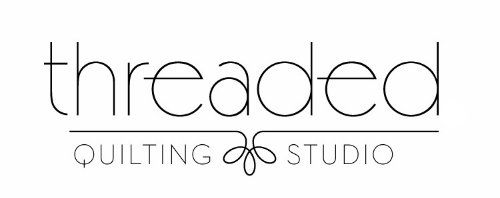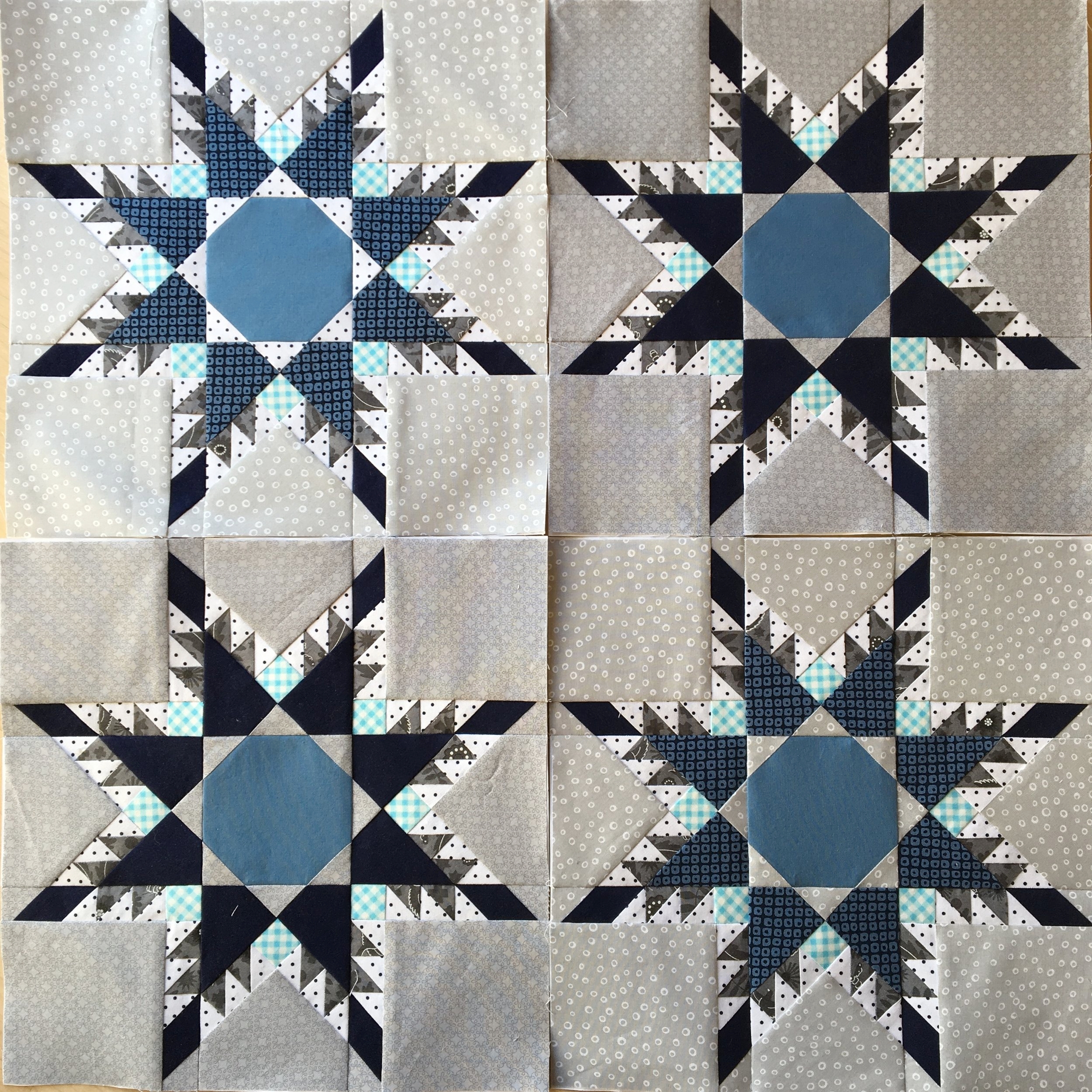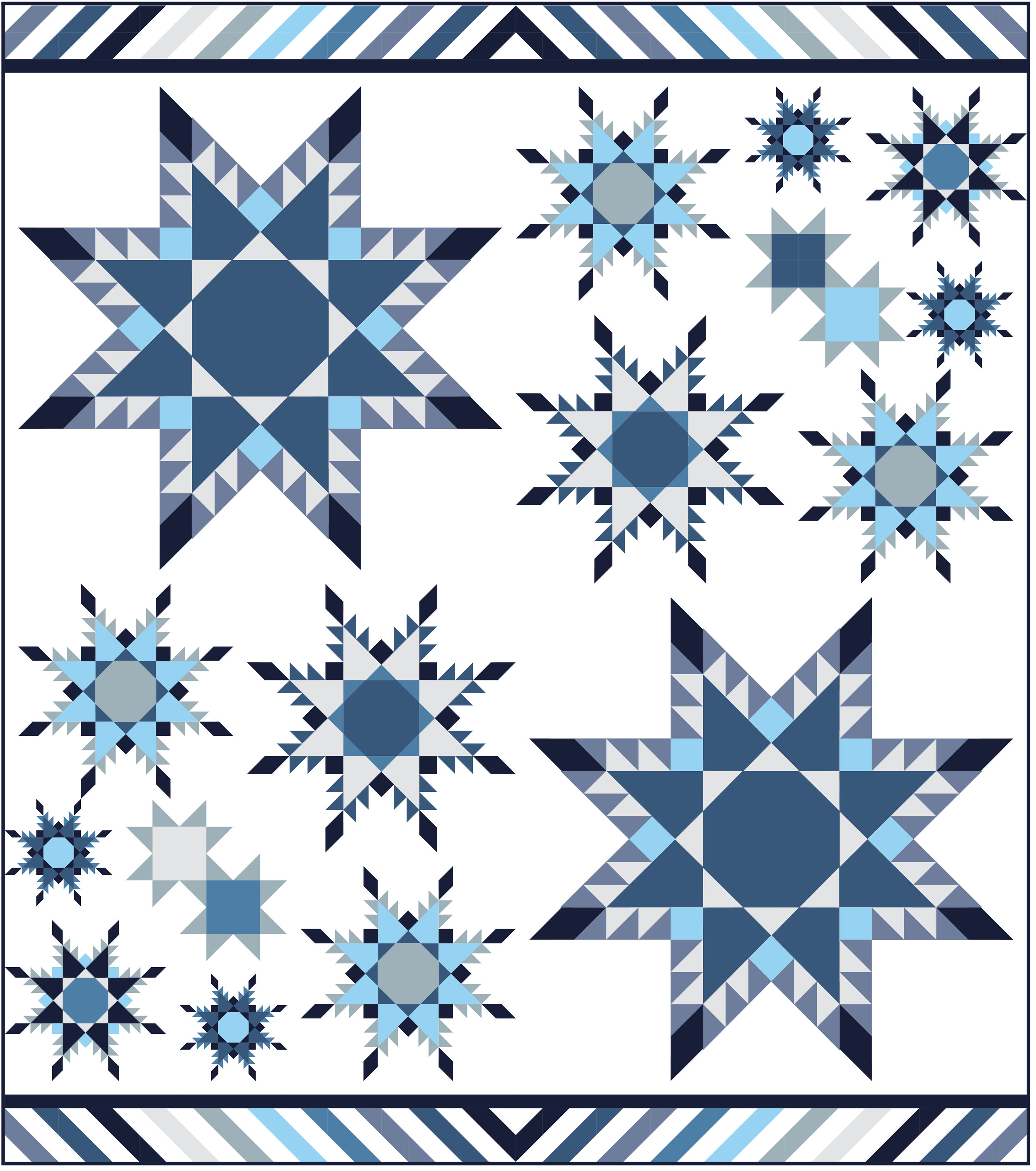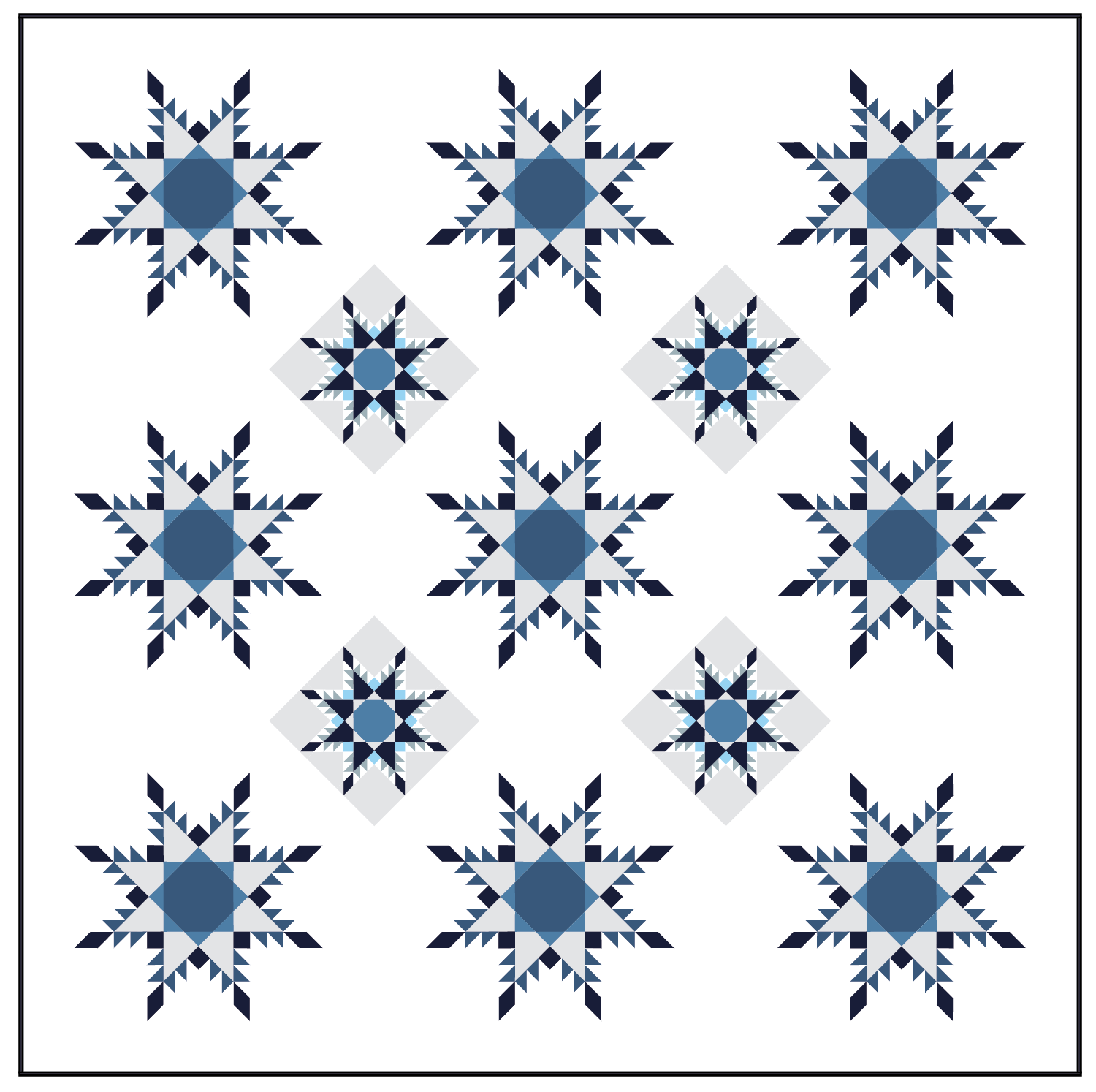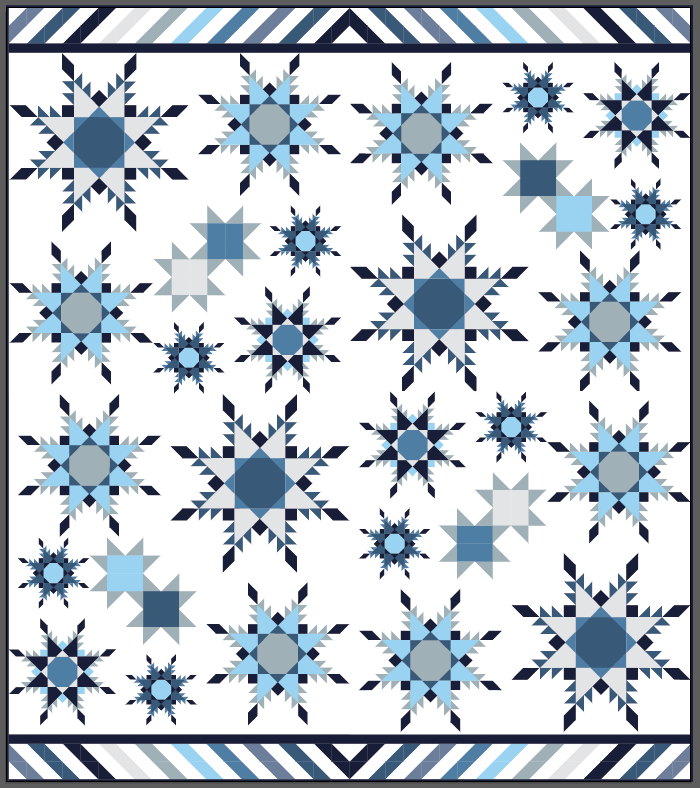12" No Y Seam Feathered Stars
Here we are! Week Three is already here! Your challenge this week:
Snowflake Sampler: two 12" No Y Seam Feathered Stars
Star Flurries: two 12" No Y Seam Feathered Stars
Feathered Star Blizzard: four 12" No Y Seam Feathered Stars
Let's talk totals for each quilt. The Sampler & Blizzard folks will be tackling all of their 12" blocks this week. The Flurries people will do two 12" blocks this week and two 12" blocks next week. If you are printing templates and cutting fabric this week, you might want to do all that prep at once.
By now, you are a PRO at constructing the No Y Seam Feathered Star blocks! The 12" blocks go together in the same way as the 16" or 20" NYSFS blocks (depending on what you completed in the previous weeks).
Remember to remove papers as you complete your blocks! I got into the habit of sewing by day and then removing papers by night in front of the tv. It makes the job more bearable, I think. Paper removal is not my favorite part of the process! ;)
I hope you're all experiencing the excitement of having the 129 fabric pieces come together to form each star! I'll leave you with this fanstastic 16" star made by Julie McLane! What a great example of coordination and contrast! I love how all of our quilts will look so amazingly different and special when we're done!
This week of the QAL is sponsored by Kate Basti of Quilt with Kate. Kate is a graphic designer tuned quilter extraordinaire and is the author of some pretty great paper piecing patterns! She will be emailing a bundle of THREE pattern PDFs to the winner. Please refer to the weekly QAL email for specifics with how to enter this drawing. Make sure to check Kate out on Instagram, too: @katebasti.
Have a great week! Don't forget to join our Facebook group here: Friends of Threaded Quilting Studio.
